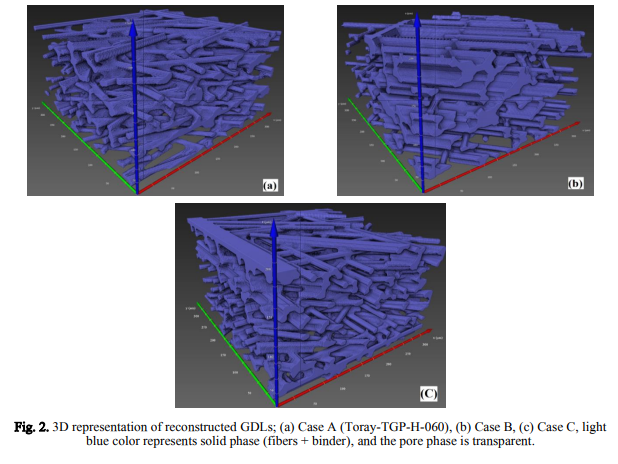Stochastic reconstruction of carbon fiber paper gas diffusion layers of PEFCs: A comparative study
Fuel cells are electrochemical devices that convert the chemical energy of fuels into electrical energy. An ideal option for a wide variety of portable, stationary, and automotive applications is using the polymer electrolyte
fuel cells due to their modular design, high efficiency, and environmental benefits.

A 3D microstructure of the non-woven gas diffusion layers (GDLs) of polymer electrolyte fuel cells (PEFCs) is reconstructed using a stochastic method. For a commercial GDL, due to the planar orientation of the fibers in the GDL, 2D SEM image of the GDL surface is used to estimate the orientation of the carbon fibers in the domain. Two more microstructures with different fiber orientations are generated and compared. The method is verified by comparing the commercial GDL (Toray TGP-H-060) model properties with other simulations or real GDL data. Three different reconstructed models are compared in terms of permeability, and the 3D pore size distribution of the models is also investigated. Through-plane (TP) and in-plane (IP) tortuosity, and the effects of binder addition on tortuosity are also discussed. For the TGH-H-060, tortuosity is derived to be 0.93, 1.50, and 1.42 in IP-x, IP-y, and TP-z directions, respectively. It is shown that adding binders to the fibrous
skeleton increases the tortuosity of the pore phase.